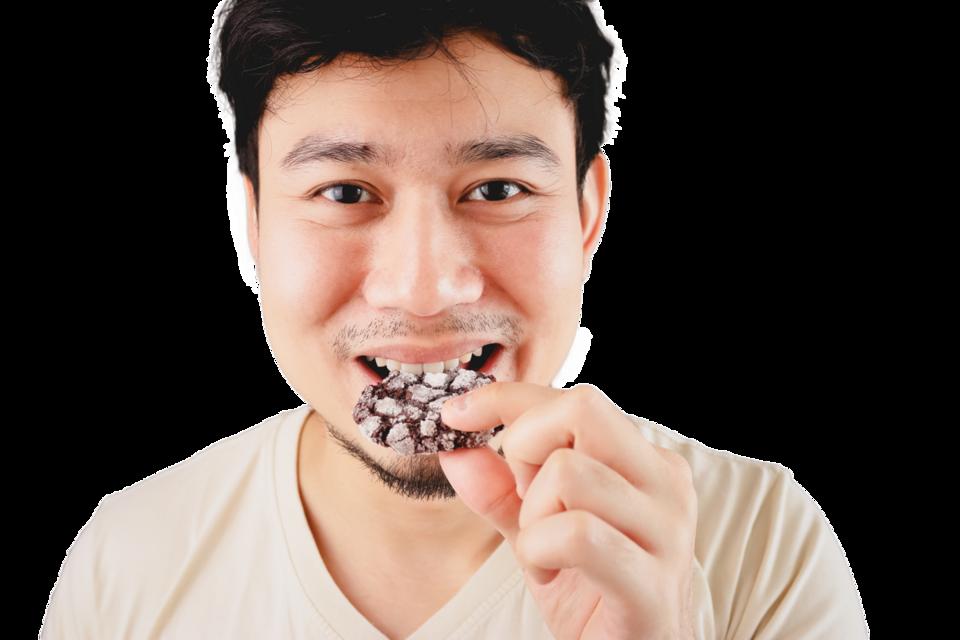
It’s called the “Crunch Effect.”
No, not Cap’n Crunch’s ability to make Aunt Jemima swoon. It turns out that paying attention to the sound of your own chewing might help you eat less.
“The sound that a food makes is something you don’t typically pay attention to, so bringing your attention to it makes you aware of what you’re consuming,” says Ryan Elder, an assistant professor of marketing at Brigham Young University and co-author of a new study in the journal Food Quality and Preference. “This is one more tool we can use to be more mindful of our eating.”
Much marketing research has focused on external cues affecting consumption, such as lighting, plating, or music in a restaurant. Elder and co-author Gina Mohr of Colorado State University instead investigated the sensory properties of food itself — the smell, look, taste, texture, and sound.
First, in a survey of 223 college students, they found that, unlike other kinds of sensory feedback, sound didn’t matter to people. Students said they became bored of the sound of eating and that it was a less important consideration than the other four sensory experiences.
Those responses piqued Elder and Mohr’s interest. “We thought, if we can bring attention to something people typically ignore, then it’s likely to have an impact on how much they consume,” says Elder.
So they invited 182 students to enjoy eight crunchy chocolate chip cookies. They asked each student to eat the cookies either as loudly or quietly as possible, or “as you ordinarily would.” Eating either loudly or quietly led to eating fewer cookies compared to the control situation, supporting the hypothesis that being mindful of the sound of chewing — whether it’s loud or soft — can reduce consumption.
Next, they offered 71 undergraduates each a pair of headphones and a bowl of mini pretzels. Putting on the headphones, some students heard loud white noise — masking the sound of their chewing — and others heard soft white noise, enabling them to hear the crack and crunch of the pretzels. The more the students could hear themselves chew, the fewer pretzels they ate.
While eating one or two fewer pretzels at a sitting doesn’t seem like much, it can really add up over the course of a month or year, says Elder.
Finally, Elder and Mohr tested how advertisements focusing on sound affect the consumer. This time, they gave 156 undergraduates a bowl of pita chips with a product description that either emphasized sound — “You’ll love the crispy sound of each bite” — or taste — “You’ll love the delicious flavor of each bite.”
Even the indirect suggestion to think about sound led to reduced consumption of the snack. Advertisers will be happy to know, however, that it didn’t affect what participants thought of the taste.
So if you’re looking to eat less, skip the TV or earbuds at your next meal and tune in to the sweet sounds of your own mastication.
MEGAN SCUDELLARI